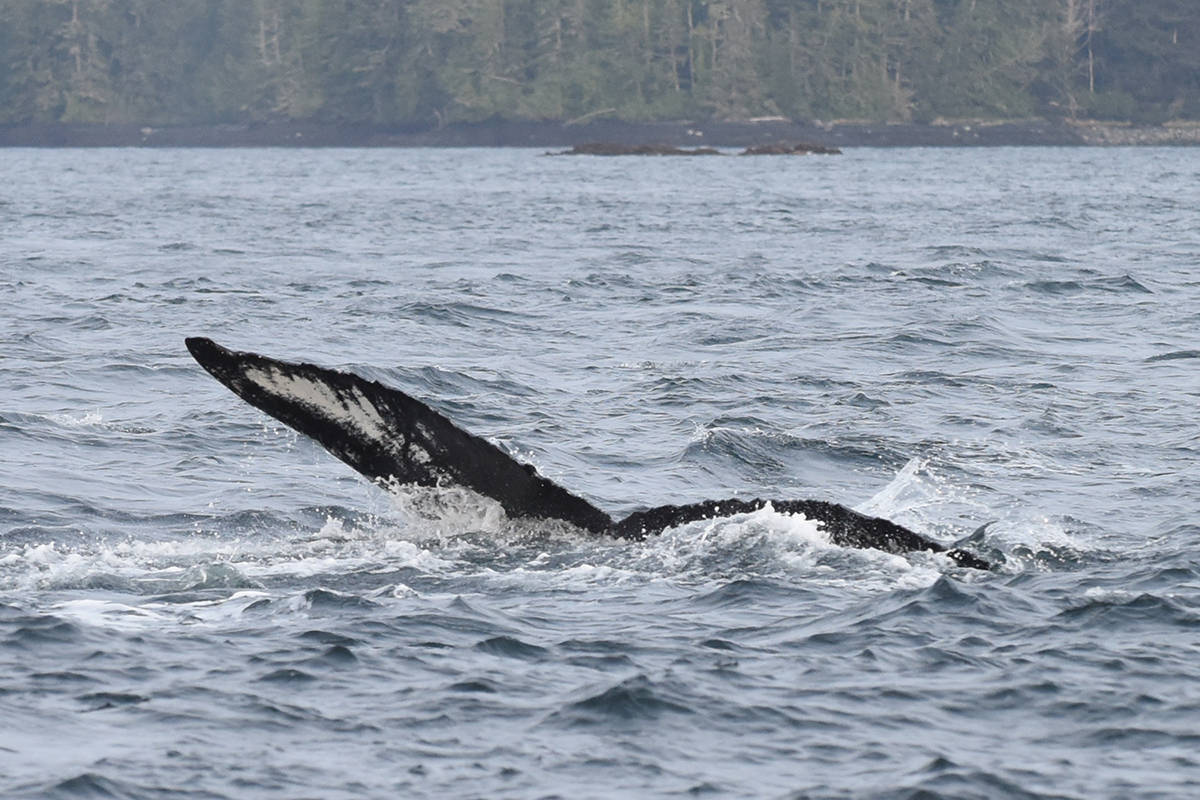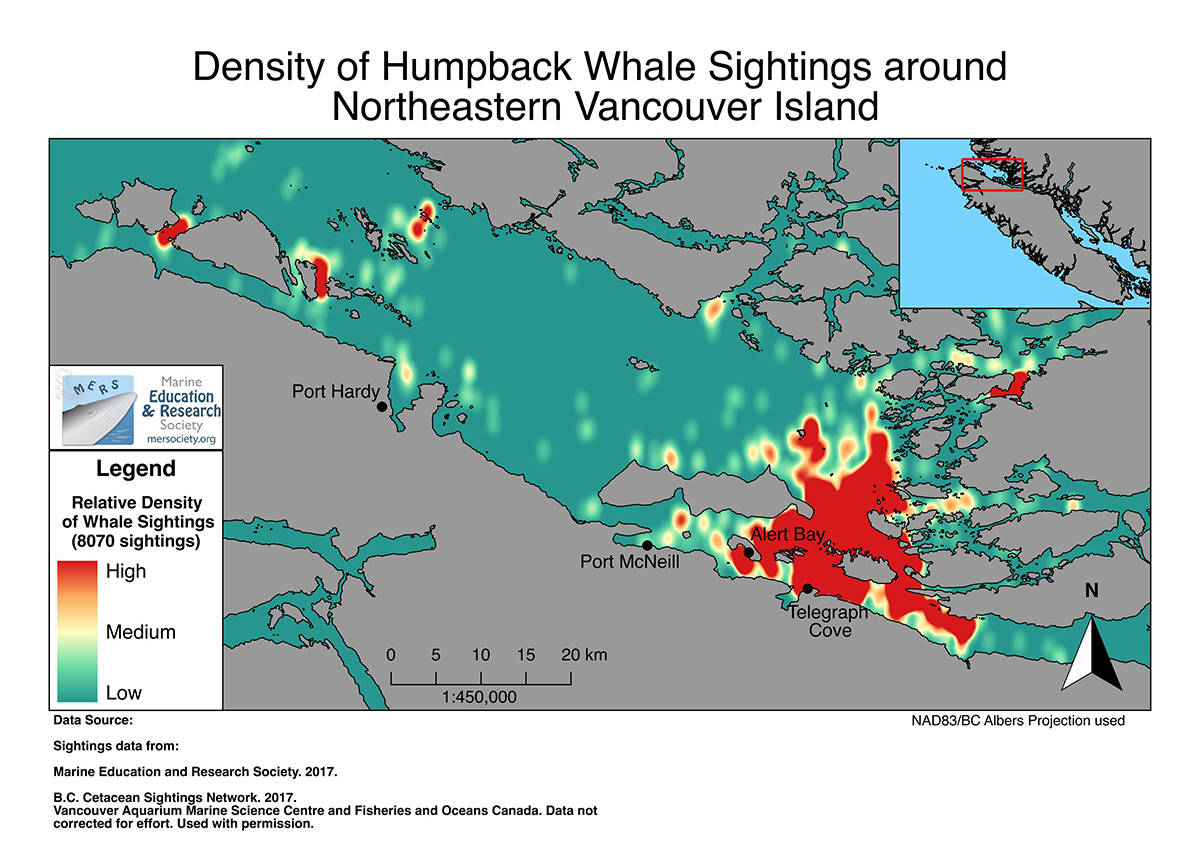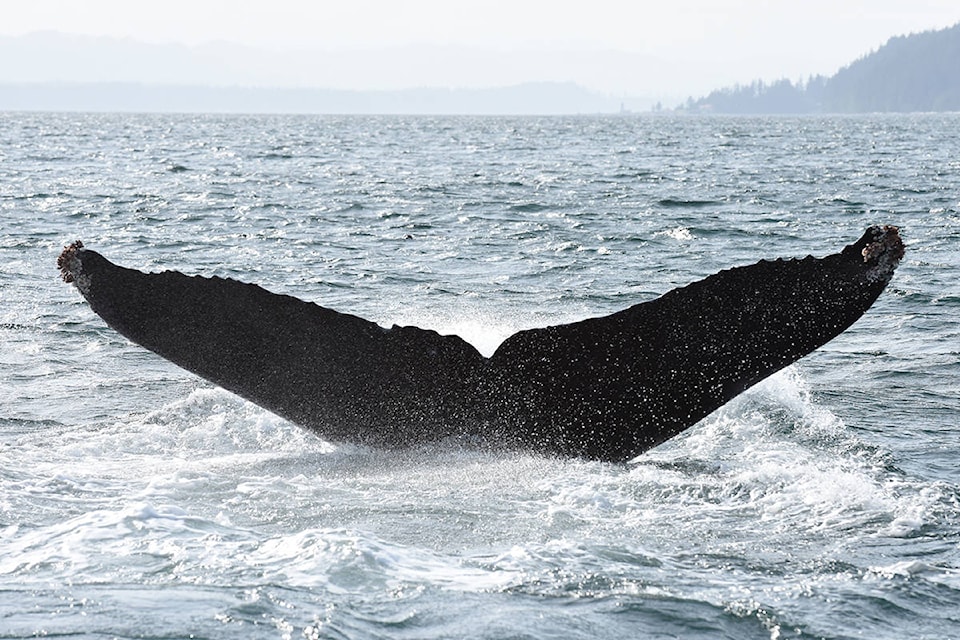Humpback whales have once again returned to feed in North Island waters.
From May to October, many humpback whales can be found feeding in the waters around northeastern Vancouver Island, and they’re already being spotted.
Jared Towers, Executive Director at North Island Marine Mammal Stewardship Association, photographed five humpback whales on April 30 near Alert Bay, Port McNeill, and Hanson Island.
“Many of these whales are individually known to researchers with the North Island-based Marine Education and Research Society (MERS) due to the unique marking on their tails,” said Towers.
“Some of the regulars that are so often around Northeastern Vancouver Island are back,” said Jackie Hildering, communications director for MERS and underwater photographer known as the Marine Detective.
She said out of the five whales photographed by Towers on April 30, “Four of them are really well known to us, and we know that they are unlikely to migrate further north because where they’ve been known to feed in previous years is much closer to this area.”
One of the whales also spotted and photographed on April 30, is a male named Argonaut, who’s been observed returning to the North Island every year since 2009.
“It’s incredible how predictable it is to see this one humpback. This is the ninth year since he’s been returning,” said Hildering.
Two of the whales photographed, known as Uluka and Slate, were spotted the day before near Campbell River and their first sighting of 2018 occurred just a week prior on April 20 in the lower Strait of Georgia near Pender Island.
Hidlering said being able to identify and track the whales is important for understanding their behaviour.
“With the fortunate increase of humpbacks on our coast, we at MERS have had to respond for the need to understand the whales and how they come back year upon year for which Jared’s photos are so essential for figuring out who they are,” said Hildering, adding “It really does take a big community to understand these giants.”
Hildering said because people have been sharing sightings they are gaining more understanding of their range and habitat use, social associations, and more.
However, as many humpback whales have begun returning to northeast Vancouver Island the risk for boater and whale safety in the area remains high.
“It’s a wonderful thing that they are back but it does make really clear that boaters have to be more vigilant when they are out there,” said Hildering.
MERS’s campaign “See a blow? Go slow!” has installed signs in areas of high whale density along the coast to help raise awareness of the risk to boaters.
“A huge part of our work has become the education piece coast-wide for what to do with collisions and entanglement,” said Hildering.
She said boaters should be on the lookout for blows, know the areas for density on the coast, and be alert that if there are a lot of birds aggregating then humpback whales may be in the area and can resurface at any time.
MERS and DFO research also suggests that at least 47 per cent of whales have scarring indicating they have been entangled in nets at least once.
“It’s so essential to call in when there is an entanglement,” said Hildering.
If boaters spot a disentangled whale, they should immediately report it to the DFO incident line at 1-800-465-4336.
For more information on the Sea a Blow? Go Slow? campaign and information about boater safety visit www.SeeABlowGoSlow.org.


